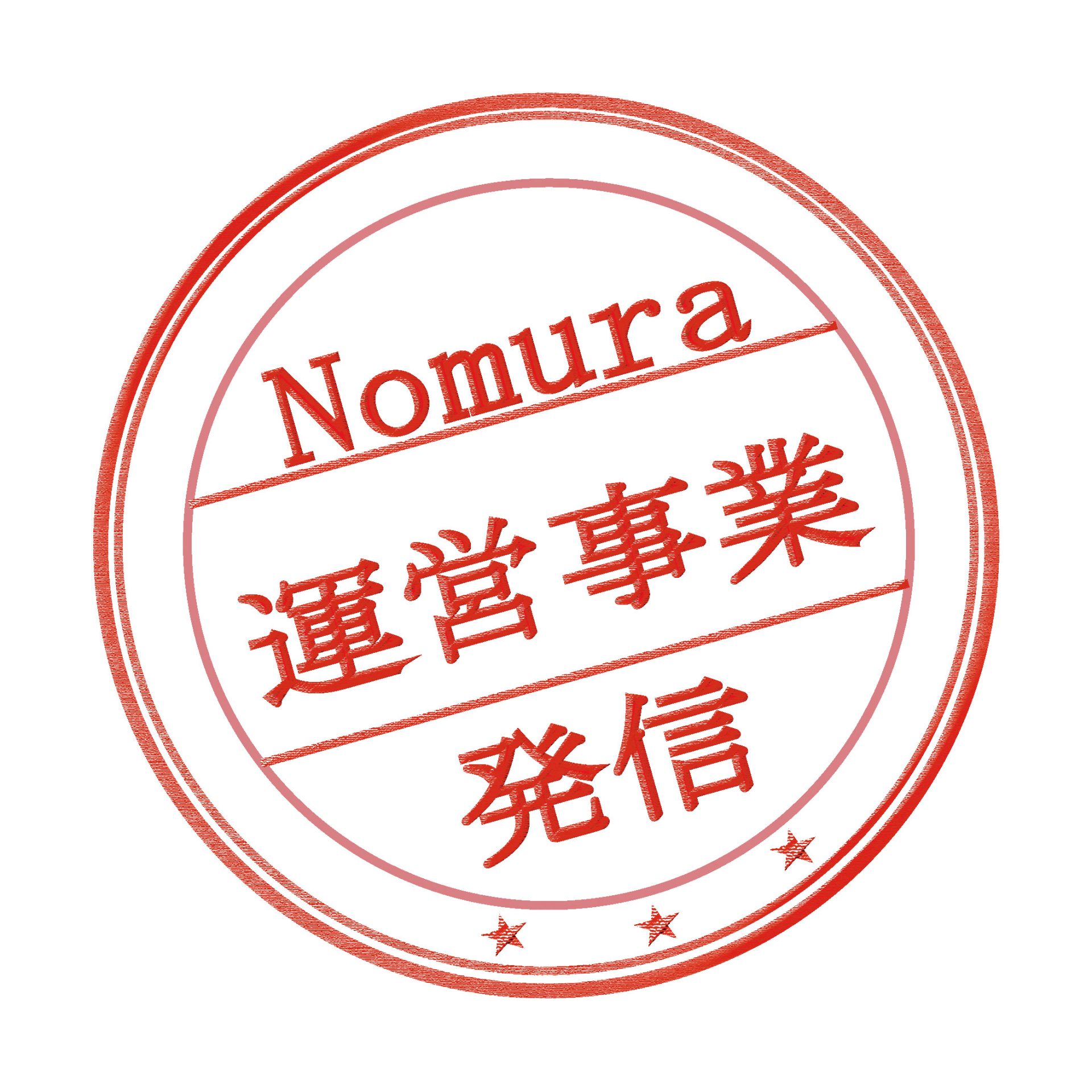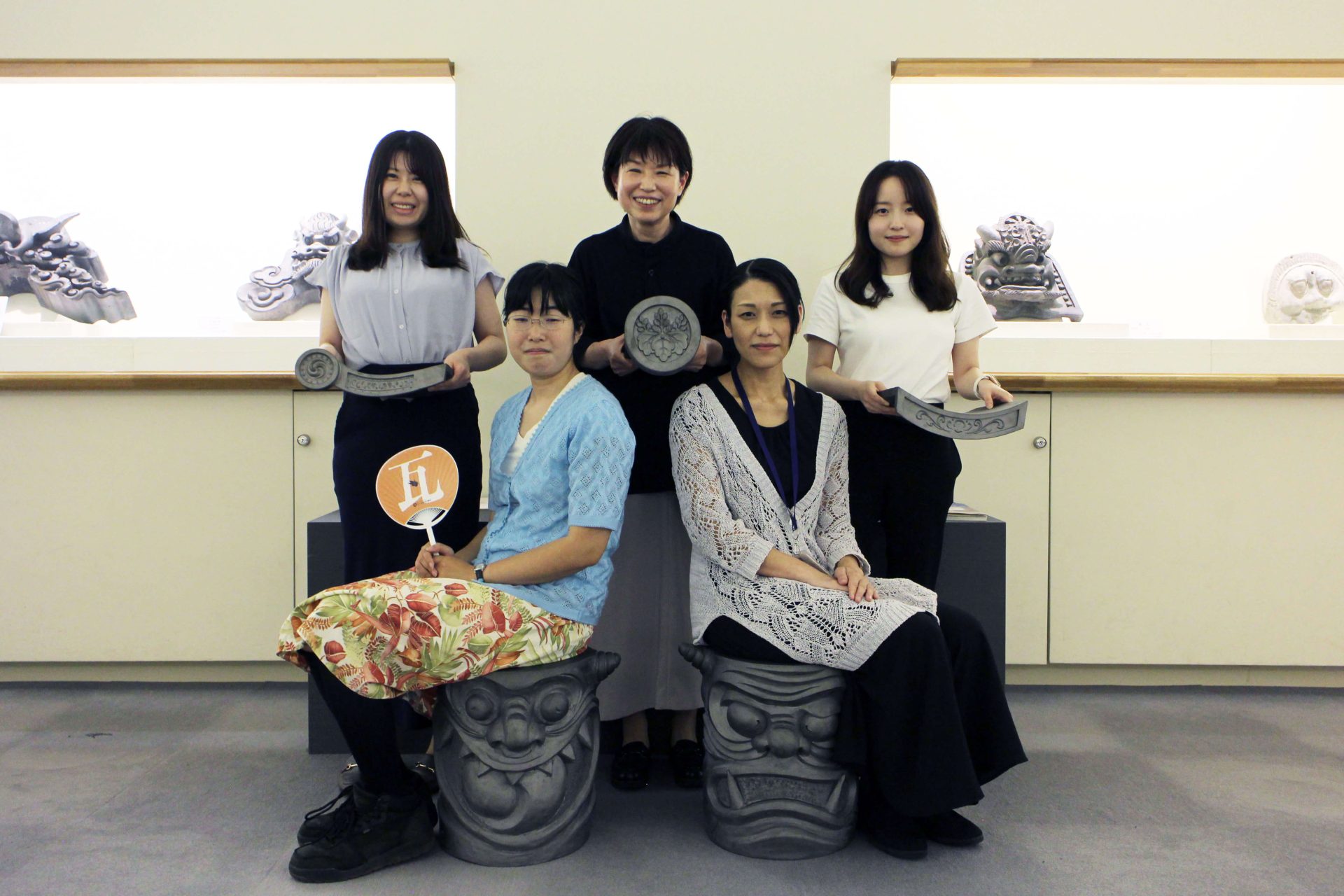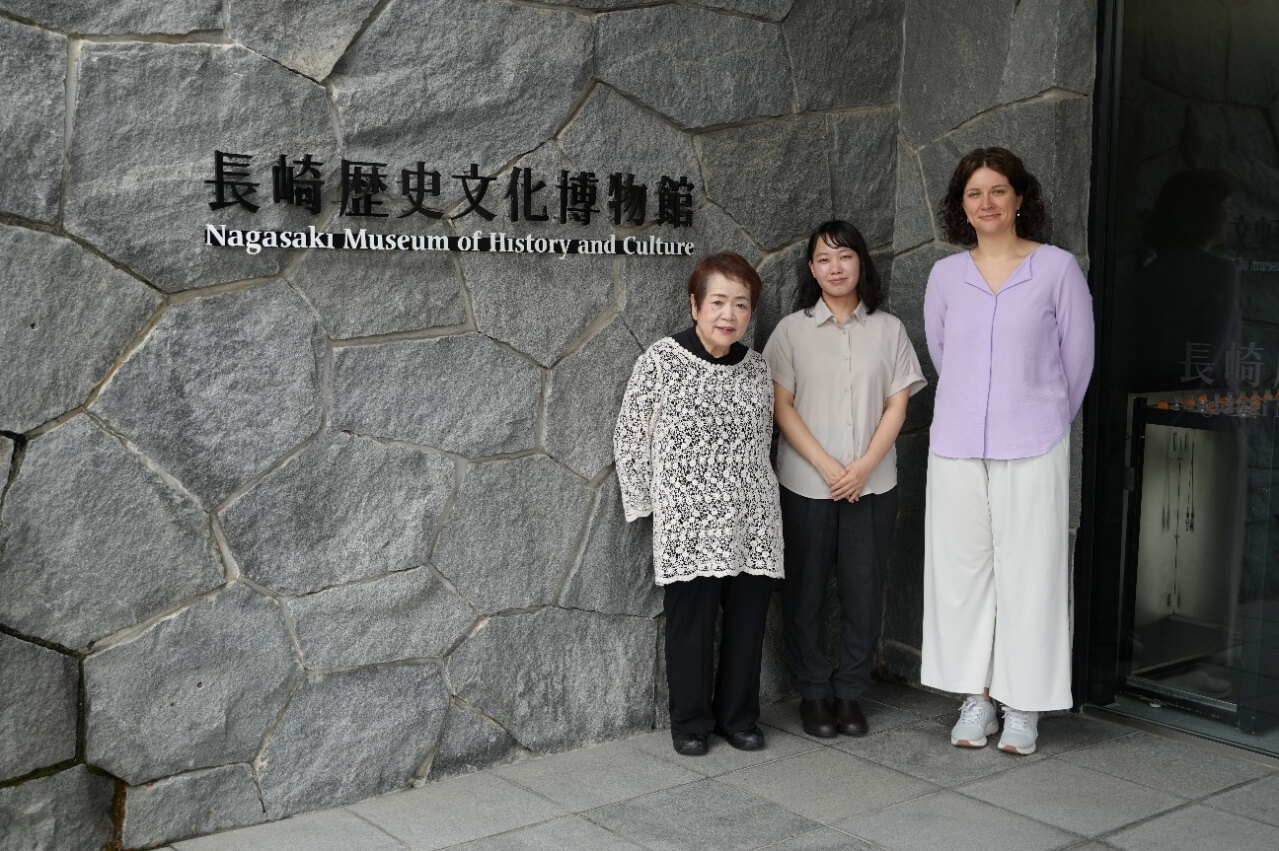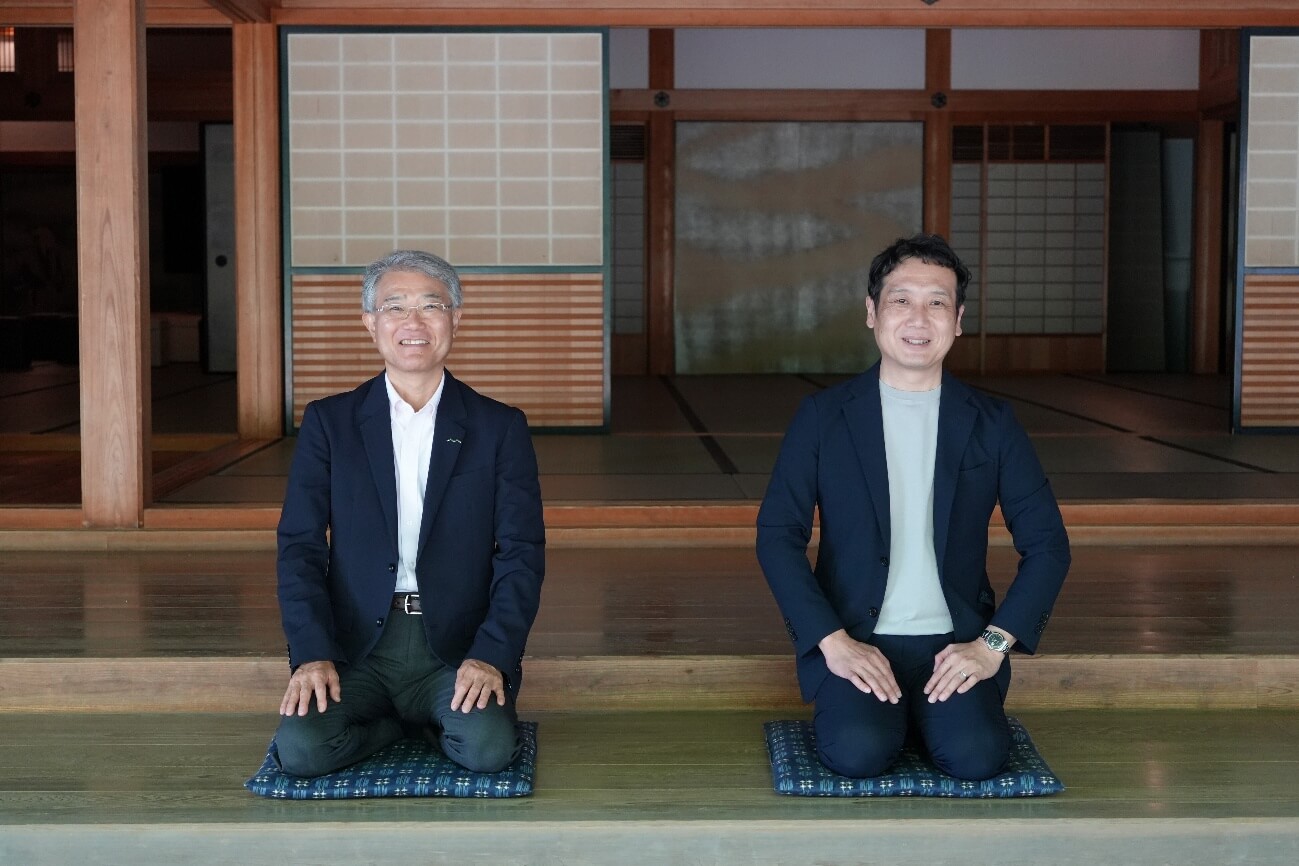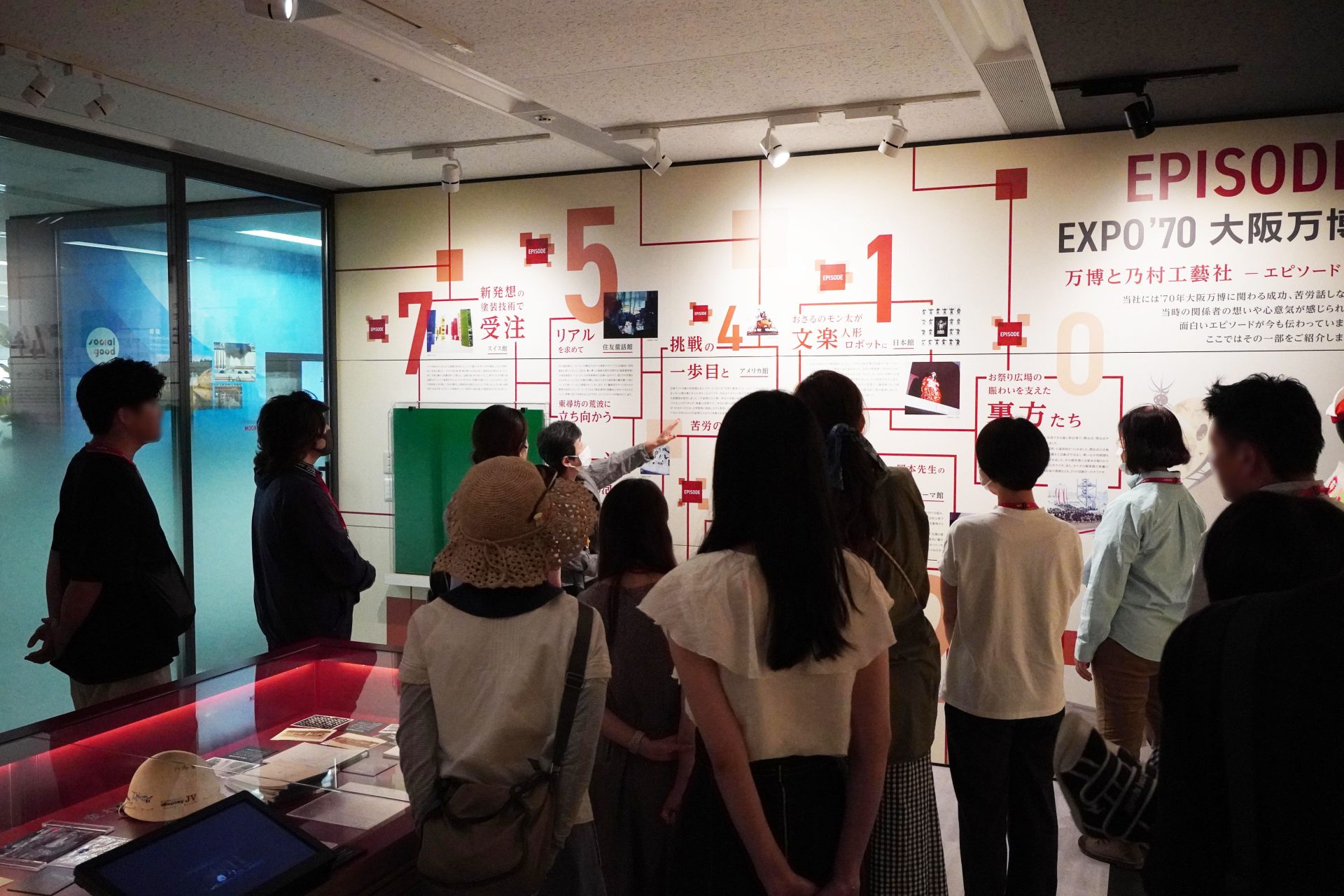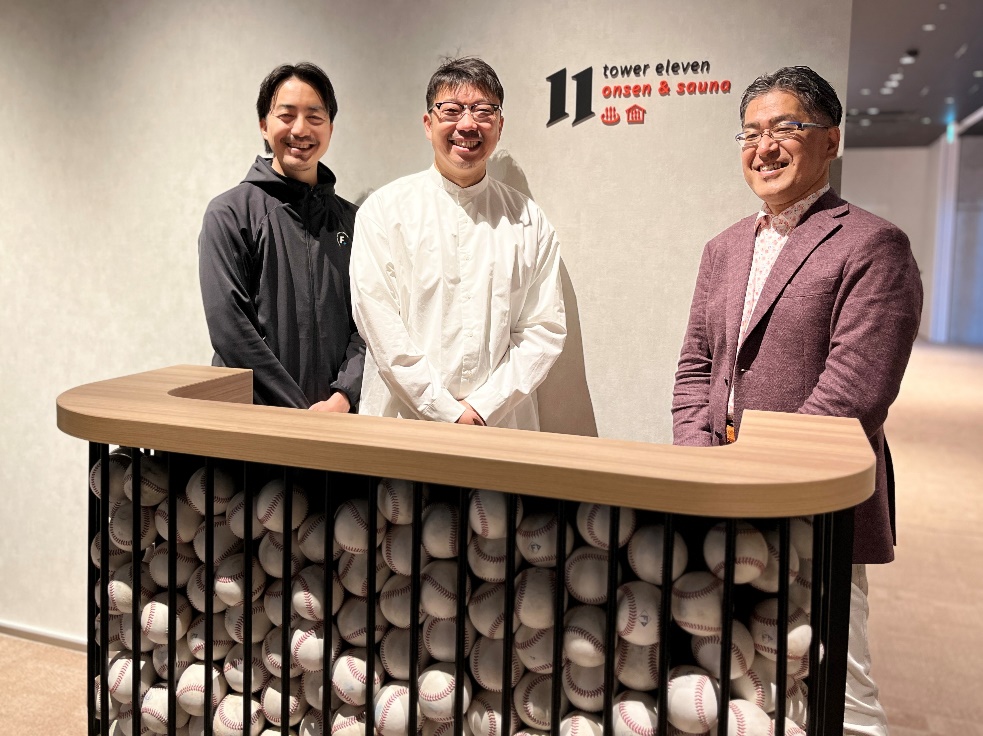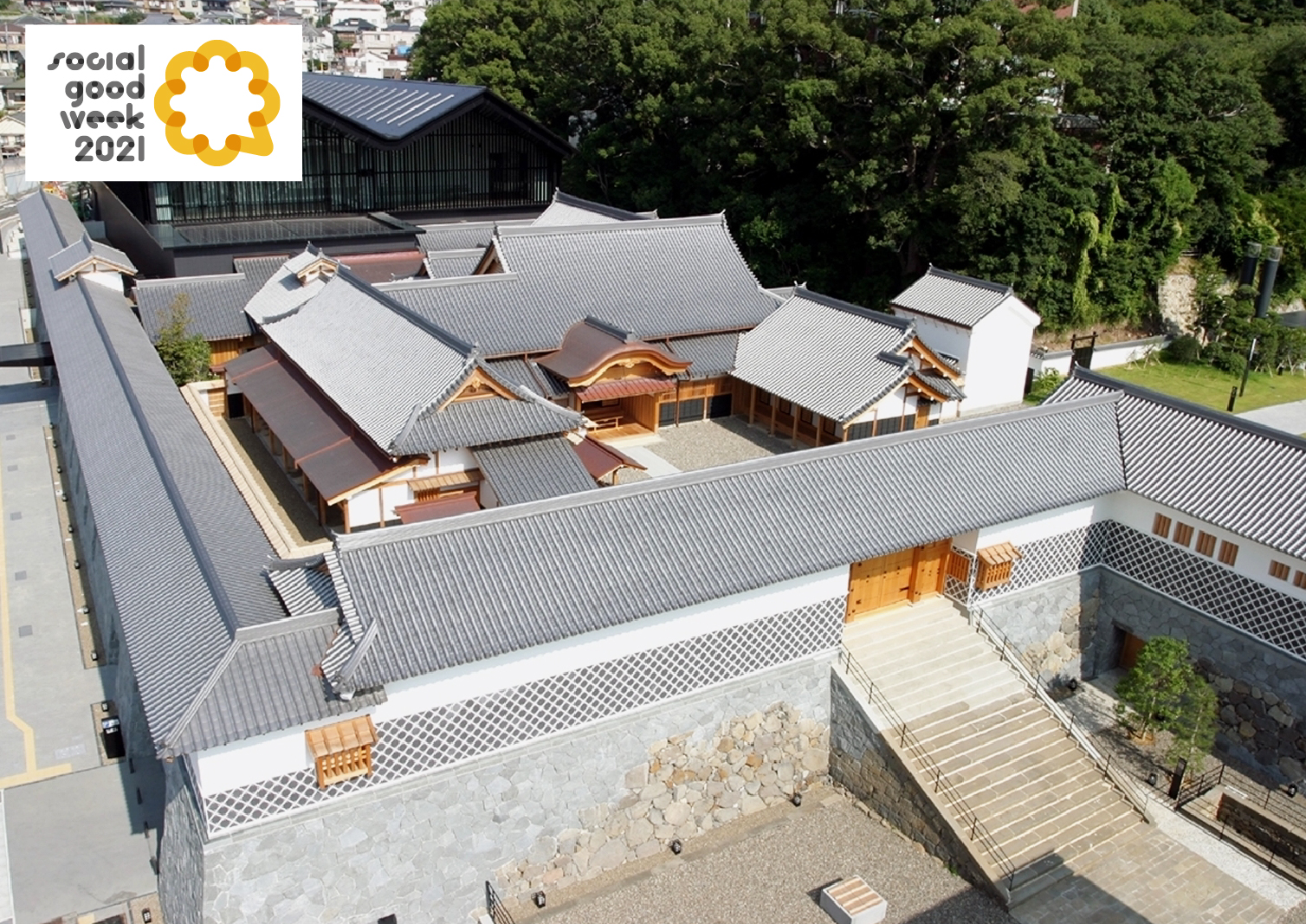
Nagasaki Museum of History and Culture Exhibitions and Regional Co-creation Initiatives: 15 Years of PPP Projects
2021/10/19- text and edit by
- nomlog editorial department
A major feature of NOMURA GROUP 's cultural environment business is that it is involved in management and operation from the planning stage in cooperation with local governments, in addition to the display decoration and space creation of museums and art galleries. It is truly a business related to the four areas of social good that NOMURA GROUP is aiming for: "Region", "Culture", and "People". In this session, we will introduce the contents of the PPP* project involved in management and operation, and the efforts of the Nagasaki Museum of History and Culture, which is one of its success stories.
* PPP (Public Private Partnership): A scheme in which citizens cooperate to provide public services. Aim to improve efficiency and quality by utilizing private capital and know-how. Also known as public-private partnership.
This article is a report article of the event "Social Good Week 2021" that introduces the "Social Good" projects of NOMURA GROUP.
Nagasaki Museum of History and Culture
Located in Tateyama, Nagasaki City, Nagasaki Prefecture, Japan, this museum opened in November 2005. The museum is popular with many visitors as a facility where visitors can learn about the culture and history of the region, with a focus on the history of Nagasaki's international exchange in the early modern period.
• Address: 1-1-1 Tateyama, Nagasaki City, Nagasaki Prefecture
• Access:
Approximately 5 minutes on foot from Sakuramachi Station on the Nagasaki Electric Tramway
Approximately 10 minutes' walk from JR Nagasaki Station
About a 3-minute walk from the Sakuramachi Koenmae bus stop
• Official website: https://www.nmhc.jp/
* Click here for details on “Social Good”
NOMURA GROUP 's Social Good (Part 1 / Part 2)
* Click here for a list of report articles on “Social Good Week 2021”
Nagasaki Museum of History and Culture Exhibition and Operational Support through PPP Project

NOMURA Co., Ltd. 3rd Business Headquarters Cultural Environment Division PPP Department
Miki Mori
After working in exhibition planning for cultural facilities, since 2005 he has been involved in the operation of cultural facilities in the PPP department. The scope of work is wide-ranging, including support for operating facilities, responding to open proposals, employee training for operating facilities, and creating opportunities for interaction.

NOMURA Co., Ltd. 3rd Business Headquarters Cultural Environment Division PPP Department
Yuri Takeuchi
Majored in Western history at university, and after graduating, obtained a master's degree in museum studies from the University of Leicester, UK. Since 1996, he has been engaged in research and exhibition design work related to museums as a special researcher at the Cultural Environment Research Institute of NOMURA GROUP. Joined NOMURA Co., Ltd. in 2005 and was assigned to the Nagasaki Museum of History and Culture. Since then, for 15 years, he has been involved in planning and management and research as a group leader related to curatorial work. From 2020, transferred to the PPP Department of the Cultural Environment Division.
PPP project contributing to regional revitalization through operation of Nagasaki Museum of History and Culture

wood
First, I would like to talk about the management and operation of cultural facilities in the PPP business of NOMURA GROUP. NOMURA Co., Ltd., Ltd. manages and operates cultural facilities specializing in museums. There are 15 theaters nationwide, 9 of which are under designated management and 6 are outsourced management*. The scale of the business is about 2 million visitors per year at 15 operating facilities, and annual sales of about 2.2 billion yen (both results for fiscal 2019). There are 210 employees involved in the operation of 15 museums, including museum directors, managers, curators, science communicators, attendants, public relations, accounting and other clerical staff.
*As of July 2021
 *The number of operating facilities is as of July 2021.
*The number of operating facilities is as of July 2021.
The PPP project was started in 2003, when the designated manager system came into effect, allowing private companies and NPOs to take over the management and operation of public facilities that had previously been handled by local governments. In response to this, NOMURA GROUP established a PPP development preparation office in 2004, and in 2005 it became the designated manager of the Nagasaki Museum of History and Culture, officially becoming the PPP Development Center (currently the PPP Department).
Underlying the philosophy of the PPP business is the management philosophy of NOMURA GROUP. The management philosophy of "creating new value" is replaced by the PPP business philosophy of "contributing to the creation of a rich human environment by increasing the value of cultural facilities and growing them as catalysts for regional revitalization and change."
 The idea of ``using cultural facilities as catalysts for regional revitalization and transformation'' appears in the 2003 book ``Museums Revitalize the City'' by Shinichi Kamiyama and Ikuko Inaba. The relationship between museums and society is said to be on the verge of becoming a "collection preservation facility" in the first stage, a "base for social education" in the second stage, and a "catalytic device that transforms the region" in the third stage. . If the second phase of the museum is to focus on marketing and services with NOMURA GROUP 's strengths as the main users, and provide high-quality products, we will further “transform the region.” We have taken on the new challenge of “enhancing regional power.”
The idea of ``using cultural facilities as catalysts for regional revitalization and transformation'' appears in the 2003 book ``Museums Revitalize the City'' by Shinichi Kamiyama and Ikuko Inaba. The relationship between museums and society is said to be on the verge of becoming a "collection preservation facility" in the first stage, a "base for social education" in the second stage, and a "catalytic device that transforms the region" in the third stage. . If the second phase of the museum is to focus on marketing and services with NOMURA GROUP 's strengths as the main users, and provide high-quality products, we will further “transform the region.” We have taken on the new challenge of “enhancing regional power.”

Designated management services are characterized by exchanging agreements with local governments, which are the installers, and acting as a partner in the management of the facility and solving operational issues together. In order to do that, it is essential not only for the installer, but also for collaboration and cooperation with various people in the region.
In addition, PPP projects not only provide various services directly to the local people who use them, but also involve local people as volunteers, etc., and operate while encouraging each other. Through such management, we fulfill our mission to society, generate social benefits, and generate business profits by properly managing income and expenditure.
Our challenges as the designated manager of the museum are the following three. The first is to manage the NOMURA GROUP, including the curatorial work. The third is hiring curators as employees.

Now, let me introduce some examples of the results of actual facility management through these challenges.
Saga Prefectural Space and Science Museum


Since the start of operations in 2006, the Saga Prefectural Space and Science Museum has held original exhibitions with originality and ingenuity, and the number of visitors has increased significantly. Based on the results of the increase in the number of visitors, we obtained a budget from the prefecture, and in 2015, the exhibition renewal (* 1) was realized, and the customers are even more pleased. The design and construction of the renewal was handled by NOMURA GROUP.
In addition, we will promote collaborative projects with JAXA (Japan Aerospace Exploration Agency) and propose an educational program called “JAXAGA SCHOOL” (*2), which will start from this summer. I am letting you.
(*1) Partial renewal of the Earth Discovery Zone, etc.
(*2) Saga Prefecture and JAXA (Japan Aerospace Exploration Agency) signed a partnership agreement in March 2021. "JAXAGA SCHOOL" is a business in the field of education
Saga Prefectural Space and Science Museum
https://www.yumeginga.jp/
Morioka History and Culture Museum


At the Morioka Museum of History and Culture in Iwate Prefecture, an exhibition was held with a fresh perspective based on research conducted by curators. I'm here. In addition, it also has the character of a tourist facility, and we are working with local people to develop and sell original goods that match the exhibition and souvenirs that make use of the characteristics of the region, increasing business profits. We have also started selling at the online shop.
Morioka History and Culture Museum
https://www.morireki.jp/
Tamarokuto Science Museum


One of the goals of the Tamarokuto Science Museum is community development, and the museum aims to function as a regional hub. One of the results is the revitalization of volunteer activities, with a total of 150 adults and juniors active. The corner run by volunteers has become the most popular corner for visitors. The museum's newest business goal is social inclusion. We are working to create a place where anyone can enjoy and learn together, including the elderly, people with disabilities, and foreign residents.
Tamarokuto Science Museum
https://www.tamarokuto.or.jp/
wood
One of the challenges in continuing to create social good through the operation of cultural facilities such as museums is to achieve both social benefits and business benefits. In addition, creating an environment where valuable human resources can work with peace of mind is becoming an increasingly important issue. In addition, it is also necessary to operate inclusively so that no one is excluded, to create facilities that welcome a diverse range of people, and to increase synergies with other original businesses of NOMURA GROUP. Finally, although this is an issue for cultural facilities as a whole, it is necessary to create a new management model for the with corona era.
Nagasaki Museum of History and Culture's Regional Co-creation Initiatives

wood
From here, Mr. Takeuchi will talk about co-creation efforts with the local community at the Nagasaki Museum of History and Culture.
Takeuchi
Now, I would like to introduce what we have been doing at the Nagasaki Museum of History and Culture from the viewpoint of social good, which is the keyword of this time.
The Nagasaki Museum of History and Culture opened on November 3, 2005 in the center of Nagasaki City. It is a facility that restored and maintained part of the remains of the Nagasaki magistrate's office in the Edo period. The building was designed by Kisho Kurokawa Architectural Design Office, established by Nagasaki Prefecture and Nagasaki City, and has been managed and operated by NOMURA GROUP as the designated manager for three years since its opening. The museum has 25 staff including the director, and about 15 floor staff who sell tickets. In 2019, the number of visitors since its opening reached 7 million. The annual number of visitors is about 400,000, which is outstanding among history museums in Japan.

The Nagasaki Museum of History and Culture inherits the materials previously stored in the Nagasaki Prefectural Library, the former Nagasaki City Museum, and the former Prefectural Museum of Art, with a collection of approximately 81,000 items. Preservation and management of these materials is also an important job of our designated managers. Based on these collections, research is conducted and the results are presented in exhibitions. In the permanent exhibition room, we mainly hold exhibits on the history of overseas exchanges in the early modern period of Nagasaki. In the special exhibition room, 4 to 6 special exhibitions are held each year on various themes that describe the characteristics of Nagasaki. However, since it is difficult to attract customers with just such an exhibition, various events such as skits at the magistrate's office Oshirasu (where criminals were judged) and the Setsubun bean-scattering ceremony were planned using the restored magistrate's office. In addition, it is used as a place for student presentations such as concerts and calligraphy performances, creating a lively atmosphere.

From here on, I would like to introduce our efforts based on six keywords: "volunteers," "traditional crafts," "Nagasaki Kunchi (Nagasaki's traditional event)," "self-governing associations," "local industries," and "children."
Volunteer activities supporting the Nagasaki Museum of History and Culture
I thought that in order for the museum to take root in the local community, it was necessary to create a platform in which citizens could participate in some way. About 200 citizens gathered for the first information session, and from July to November, volunteer training was conducted to prepare for the opening. In the end, 186 people registered as volunteers and participated in the operation. Even now, citizen volunteers participate in the operation of various scenes, such as exhibition guide volunteers, educational dissemination volunteers, IPM* volunteers who help with the preservation and management of materials, and skit volunteers.
*IPM: Abbreviation for Integrated Pest Management. Minimize pest damage to materials and exhibits.

skit volunteer
Experience traditional crafts at the Nagasaki Museum of History and Culture
The museum has a facility called a traditional crafts experience workshop, which serves as an activity base for citizen groups working on Nagasaki's traditional crafts such as silverwork, pottery, Nagasaki embroidery, dyeing, and stained glass. In addition to hands-on workshops for visitors, we hold the Nagasaki Traditional Crafts Festival every year to see the results of our activities. In 2017, Nagasaki tortoiseshell was designated as a national traditional craft by the Ministry of Economy, Trade and Industry. A special exhibition was held in cooperation with the Commerce and Industry Departments of Nagasaki Prefecture and Nagasaki City.


(Left) “Nagasaki Dyeing School”, a collaboration with a traditional craft workshop (Right) Collaboration between the tortoiseshell industry and the government, a special exhibition “Nagasaki tortoiseshell”
Experience Nagasaki Kunchi at the Nagasaki Museum of History and Culture
"Nagasaki Kunchi" is a traditional festival that has continued since the Edo period and is designated as an Important Intangible Folk Cultural Property of Japan. At the museum, the museum's facilities, such as the event square, are open for Kunchi rehearsals and the "Niwamise" event before the performance. In addition, we hold the "Kunchi Exhibition" during the festival season, and work together with the local community to bring excitement to the festival. This initiative helped us to deepen our ties with the local people.

Rehearsals for the festival at the event square of the museum
Cooperation between the Nagasaki Museum of History and Culture and local residents' associations
The Nagasaki Kunchi event led to a relationship with the town residents' association, which led to the idea of holding the Nagasaki Magistrate's Office Summer Festival, which had been led by the museum until then, together with the neighboring residents' association. became. As a result, the number of visitors to the summer festival has increased dramatically, and the residents' association is pleased that the town has been able to come together as one.

The contents of the festival are enriched with the cooperation of the neighboring residents' association
Promoting local industries through the Nagasaki Museum of History and Culture
Nagasaki Prefecture is also a tea production area, and Higashi Sonogi Town is one of the production areas. I myself am interested in tea, so I wanted to tell more about the charm of Higashisonogi tea. We held a study tour around a farm. With the cooperation of many people, including the Higashisonogi town office, NPOs, and tea-related associations, I am proud that the project turned out to be a very good one.


(Left) Higashi Sonogi, a climate suitable for growing tea leaves (Right) “Higashi Sonogi Tea Tour” tour
Nagasaki Museum of History and Culture and Children's Learning Programs
Historical museums can feel intimidating to children. At the museum, we have various programs for children, such as the "Hakubutsukan Story Meeting" for young children, the "Rekibun Children's Club" and the "Children's Tea Ceremony Club" for elementary school students, so that they can become familiar with the museum from an early age. offers. In addition, as programs for schools, we are working on "tour support," "traveling museums," "visiting classes," and "remote classes." increase.

School program for visiting school groups
Finally, I would like to talk about what I felt through my experience and what is important in working with the local community.
One is to change the mindset of the staff. We tend to think of the museum as a place where our staff work, but we need to be aware that the museum belongs to the local people, not to the staff. Local communities hold many possibilities, and it is important to keep an eye on what kind of people there are and what they can do together.
The other is to cherish encounters with people and communicate with them. In working together, we need to work with the same goal and awareness.
After all, passion and creativity. It's about enjoying what you're doing. Keeping this in mind, I would like to improve the operation of the museum.
Reference materials: Educational activities of the Nagasaki Museum of History and Culture
Click here for NOMURA GROUP 's achievements at the Nagasaki Museum of History and Culture
【notice】
An exhibition planned and produced by NOMURA Co., Ltd. that looks back on the history of the 120-year exposition spanning the Meiji, Taisho, and Showa eras. "Century of Expositions 1851-1970" is held at the Nagasaki Museum of History and Culture. Detail is here
Organizer: Nagasaki Museum of History and Culture, NOMURA Co., Ltd. / Date: October 2nd (Sat)-November 28th (Sun), 2021
The PPP business of NOMURA GROUP, which has been operating facilities rooted in the community for more than 15 years, starting with the Nagasaki Museum of History and Culture introduced this time, can be said to be a pioneer of social good. In addition to cooperating with local volunteers, the management of proactively going out to the community to create points of contact is a know-how that can be utilized in the creation of various facilities rooted in the community in the future. I felt it was. (nomlog editorial department)
Text: Sho Iwasaki/Photo: Yui Yasuda
Like this article?


